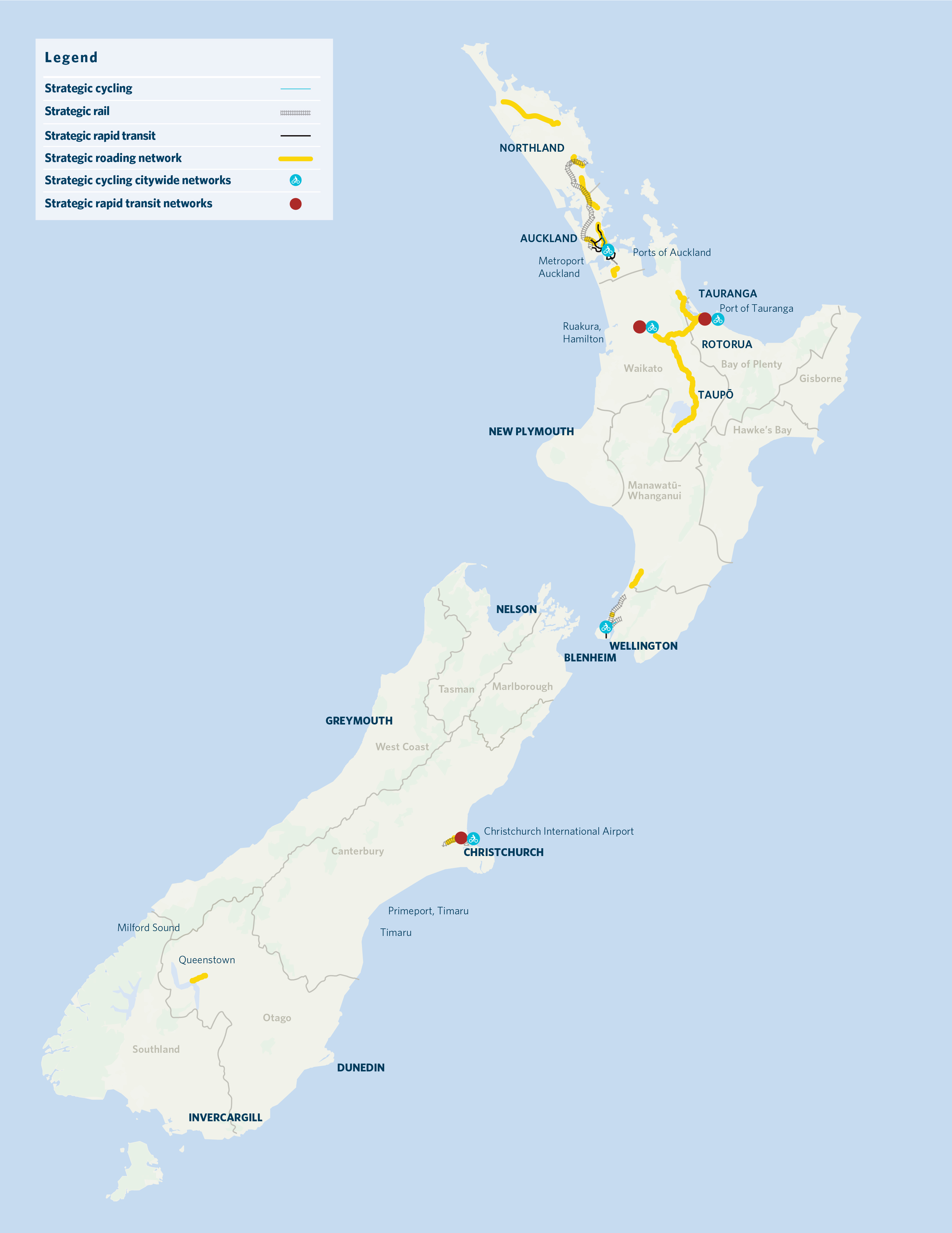The Transport modes and strategic networks section of Arataki provides:
Arataki transport modes and strategic networks [PDF, 18 MB]
The September 2023 v1.1 release of Arataki includes updates to reflect the severe weather events of 2023 and make minor corrections.
The land transport system moves people and goods. It affects individuals, households, businesses, and communities – and includes all institutions, networks, purposes, and ways of travel (modes). It excludes pipelines, and separate but related parts of the wider transport system including aviation, maritime, and outer space.
There are several ways we move in the land transport system. The mix of how we move will change in the future as we reduce emissions, make the most of our existing networks, and encourage greater use of public transport modes, like rapid transit and public transport.
There are challenges to work through, like how we manage different modes and how these interact, such as cycling on busy roads. There are long-standing safety issues to address, such as with a road network that doesn’t forgive drivers’ mistakes. There are conflicts of place and movement where highways pass through communities that need to be resolved.
Arataki provides guidance about the following modes:
Strategic networks are those most critical to the country’s land transport network. These form the backbone of the system, supporting the most essential movements of people and freight across all modes.
Many of these networks across Aotearoa New Zealand have been in place for a long time. They’ve shaped the way the country has grown and developed. Many towns and cities exist where they do because of past or current strategic transport routes.
Our current network map is an interactive view of the existing land transport network in Aotearoa New Zealand.

View larger image [PDF, 442 KB]
As the second riskiest country in the world for natural disasters, Aotearoa is particularly prone to significant seismic and geological activity.
Critical parts of the strategic network have been impacted by these in the past. For example, State Highway 1 and Main South Line north of Kaikōura following the earthquake in 2016.
Others have high levels of risk, like fault lines in Te Whanganui-a-Tara Wellington near State Highway 1 and the interisland ferry terminal.
Some alternative routes also have risks, like State Highway 7 Lewis Pass which can be closed because of heavy snow.
These risks are mostly unpredictable, but how they are dealt with can be planned.
Our future focus map shows where significant future interventions may be required on the state highway network to address a high levels of service deficiency. The map also shows where significant interventions aren’t anticipated.
Challenges are likely to remain the same, but increase in magnitude, frequency, and duration.
To continue as lifeline connections, the strategic network will need to balance resilience, service levels, and maintenance costs.
As we expand or change strategic networks strategic networks in the future, we’ll need to make sure we don’t create new resilience challenges.
Some key areas to focus efforts include:
Arataki transport modes and strategic networks [PDF, 18 MB]
How we manage, operate, and develop strategic networks now and over the next 30 years will significantly affect:
Our approach to strategic networks in the next three decades has two parts:
This approach recognises the best way to progress towards transport outcomes is through ongoing programmes to maintain current networks and make incremental improvements.
This applies to most strategic networks, especially those already well developed. It also highlights that in some areas and networks an incremental approach won’t be enough. Here, more transformational change is required.
While planned and ongoing programmes are the best way to make progress for most of the strategic network, transformational change will be required when:
Our future focus map shows where significant future interventions may be required on the state highway network to address a high levels of service deficiency. The map also shows where significant interventions aren’t anticipated.
